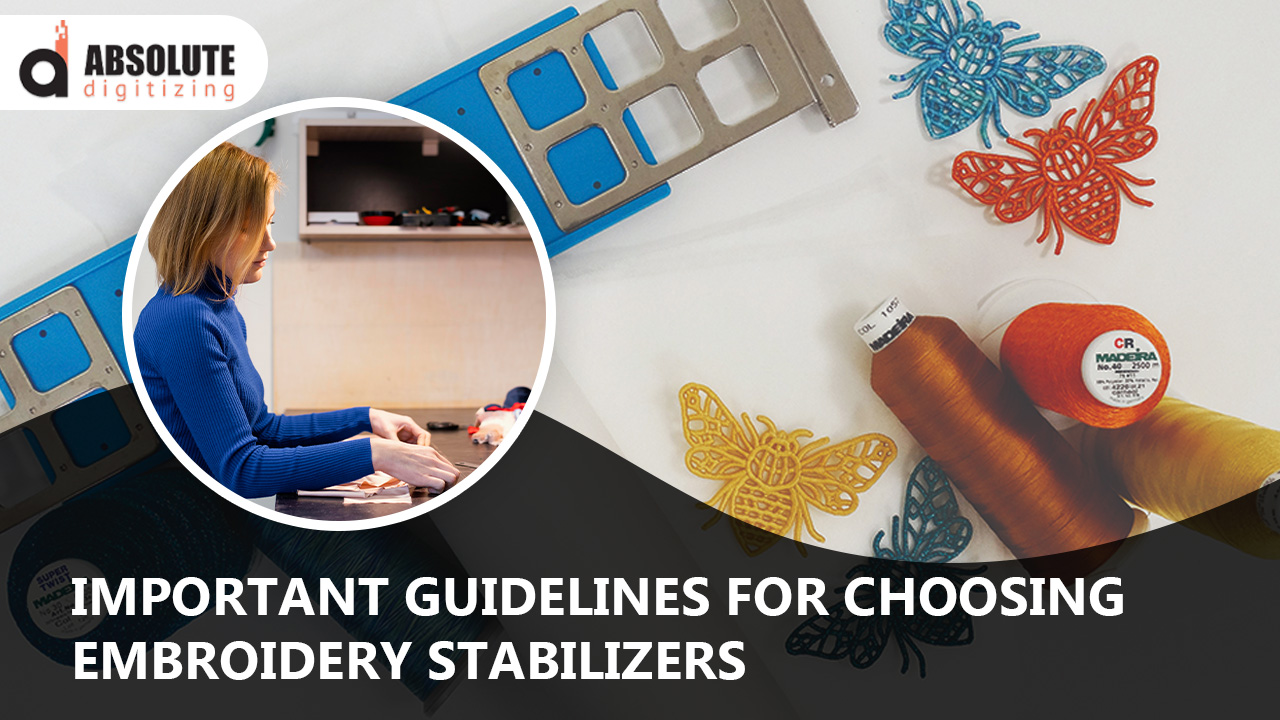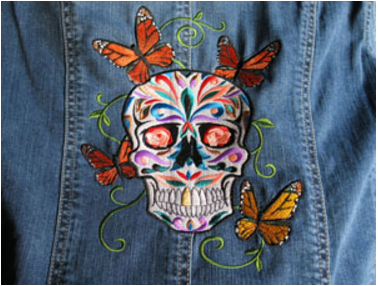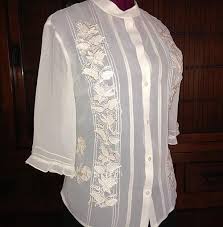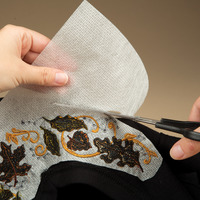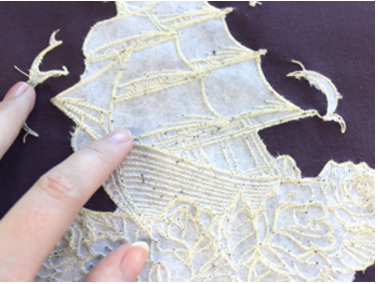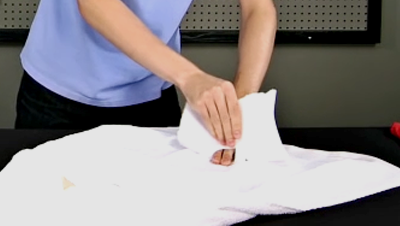Embroidery Stabilizers are the unsung heroes of embroidery process. They make sure that the fabric doesn’t slip or pluck during the process, giving a smooth and clean look to the embroidered fabric. Although embroiderers try their best to get rid of stabilizers by the end of it. They owe a great credit to these backings for keeping the fabric stable and enabling them for a great sew-out.
Choosing embroidery stabilizers can be confusing. There are various factors that have to be considered before making a final selection for a specific cloth. By the end of this guide, you will be able to make a decent selection of embroidery stabilizers for your future projects.
Factors To Consider For Choosing Embroidery Stabilizers
Fabric Type:
This is perhaps the most important factor in the selection of a suitable embroidery stabilizer. If you are working on a knitted fabric, like sweaters and sweatshirts, use cutaway stabilizer rather than a tear-away. We will see different types of stabilizers later and you will better understand that why is it so. Knitted fabrics are slippery under the embroidery needle and therefore, to stabilize them, cutaway backings perform better.
Another thing to consider is the fabric weight. Backing weight should be compatible with the weight of the fabric. The heavier fabrics will go great with heavier backings. Opposed to this, lighter and drapery fabrics should be backed with lighter stabilizers.
At times, there will be special considerations for some types of fabrics. For instance, consider a scenario where you are supposed to embroider on a sheer piece of cloth. Not only the stabilizer should be lightweight in this case, it should also be water soluble. Water soluble stabilizers completely wash off and there are almost no traces left behind. In this case, cutaway or tearaway stabilizers will be clearly visible and are not recommended.
Design:
Choice of embroidery stabilizers is also dictated by the design that has to be engraved on the fabric. As a rule of thumb, the more complex or intricate the machine embroidery design, heavier the stabilizer should be. This implies that with more stitches, a heavier stabilizer is required to keep the fabric intact.
More importantly, use a professionally digitized design with sufficient underlay to provide stability and support to the fabric.
Appearance:
Selection of the backing also depends on the desired end appearance of the cloth. If you want a clean design, without any trace of the stabilizer, use water-soluble stabilizers. Cutaway backing remains intact, while only the excess is removed from sides. Though this remaining backing supports stitches for the lifetime, it can be displeasing in some cases. Most part of the tear-away backing is removed after the process has been done.
While these are some great tips, at the end of the day, they are not rule of thumb. There can be odd instances where these guidelines won’t suffice because there are so many other factors that are playing their part. Needles, threads, hoops and various other components all have their own significance and thus affect the results. The way out is vigorous testing.
Embroidery Stabilizer Types
We have gone through some of the most important factors that have to be considered before making a choice for a stabilizer. Let us now go through the most important embroidery backings to give you an even better understanding of them.
Cutaway Stabilizers:
Cutaway backings can be used with any material because of their immaculate support properties. They are the most stable type of backings. They are especially useful with knits and stretchy fabrics.
Cutaways are also best suited for complicated designs with a high stitch count. Cutaways are more resistant to needle perforations and are, therefore, able to stabilize a high-stitch count design. Tearaways, on the other hand, have a tendency to distort such designs.
Advantages:
-Most stable backing.
-Supports designs even after the sew-out.
-Ensures smooth production by preventing fabric from going in throat plate of embroidery machine.
Works Best With:
-Knits, stretchy and soft clothing.
-Complex designs with a high stitch count.
Tear-away stabilizers:
Tear away stabilizers, as the name explains, are teared-away from the embroidered product after the job has been done. The removal is easy and any pieces of backing that are constricted between the design will eventually come off after few washes. They can be used with any material with the exception of knits and sheer fabrics. Tear-away backings are unable to efficiently stabilize such fabrics.
Unlike cutaways, tearaways give a clean look to the apparel without any major traces of backing. Most embroiders dealing with stable fabrics prefer tear-away over cut-away backings for the same reason. It is quick, easy and cost-effective to remove tear-away backing. Moreover, the stability trade-off is quite workable with rigid and stable fabrics.
Advantages:
-Quick and easy to remove.
-Avoids the risk of designs getting affected while cutting the backing with scissors.
Works Best With:
-Sturdy and rigid fabrics which do not require extraordinary stability.
Wash-Away Stabilizers:
Wash-away backing ought to be used when a complete removal of backing is required. It is normally used and best suited for sheer materials.
Wash-away stabilizers are not usable with clothes which cannot be washed. Moreover, the stability of wash-away stabilizers is significantly less than that of cutaway and tearaway embroidery stabilizers. Hence, they are unable to support complex designs, involving a high stitch count.
Advantages:
-Very easy and efficient removal.
-No risk of designs getting affected during the removal.
Works Best With:
-Sheer Fabrics.
-Designs which need to be seen from both sides.
Heat-away Stabilizers:
Heat-away backings are rarely used embroidery stabilizers but they are of great use in special situations. Like wash-aways, heat-aways also completely remove the backing. Heat-away backings are used as a last resort for the fabrics that cannot be washed and also need to have the backing completely removed.
Removal is done by pressing the garment against an electric iron. Steam iron should never be used with heat-away embroidery stabilizers, as it can leave stains and can damage the garment in an irrevocable manner.
Embroidery Toppings:
Toppings are another type of embroidery stabilizers that are used on top, instead of the back of the material. They are comparatively less common than backings but are of particular help while working with knits or similar type of fabric. Toppings prevent the ‘sinking’ of stitches into such materials and thus, help in creating a smooth embroidery design.
Materials which necessitate a use of topping include velvet, fleece, jersey, knits, artificial fur and other fabrics of similar nature.
Experienced embroiders can play with different types of stabilizers in certain conditions but let’s keep these special cases for another day.
Let us know what you have to say in the comment section. We surely would love to hear that. Meanwhile, if you need any professional help with embroidery digitizing, we are here for you.

